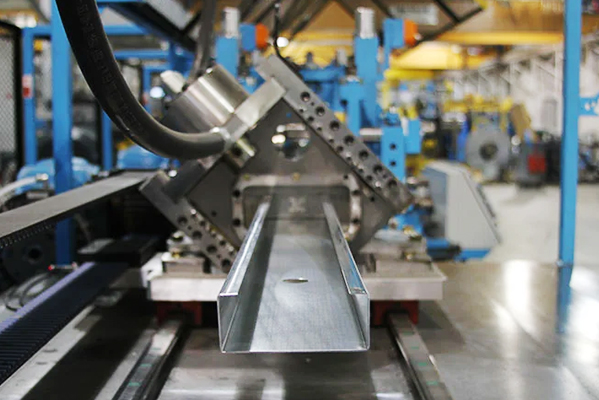Navigation Menu
Contact Us
- Email:
- info@wxavatar.com
- Address:
- Yurong Village, Yuqi Street, Huishan District, Wuxi, China.
Release Date:Mar 27, 2025 Visit:63 Source:Roll Forming Machine Factory
Steel frame system equipment has revolutionized modern construction with its efficiency and durability. However, working with heavy machinery, sharp materials, and complex processes introduces significant hazards. Understanding these risks is critical to ensuring worker safety and project success. Below, we explore the most common hazards associated with steel frame system equipment and their implications.
1. Physical Injuries from Machinery and Materials
The use of heavy machinery and handling of steel components pose direct physical risks:
Entanglement and Crush Injuries: Roll-forming machines, punch presses, and conveyor belts have moving parts that can trap limbs or clothing.
Struck-by Accidents: Falling steel beams, misaligned robotic arms, or ejected metal fragments during cutting can cause severe injuries.
Cuts and Lacerations: Sharp edges on steel sheets, studs, or improperly handled tools may lead to deep wounds.
Example: A worker operating a laser cutter without protective guards might sustain hand injuries from flying metal debris.
2. Electrical Hazards
Equipment such as welding tools, CNC machines, and automated systems rely on high-voltage power:
Electric Shock: Faulty wiring, damaged insulation, or improper grounding can electrocute operators.
Arc Flash Risks: Welding and cutting processes may generate explosive electrical arcs, causing burns or fires.
Example: A frayed power cord on a self-drilling screw gun could result in a fatal shock.
3. Noise-Induced Hearing Loss
Prolonged exposure to loud machinery (e.g., hydraulic presses, punch machines) without hearing protection can cause permanent hearing damage.
4. Respiratory and Chemical Hazards
Metal Dust and Fumes: Grinding, cutting, or welding steel releases fine particles and toxic fumes (e.g., hexavalent chromium), leading to lung diseases.
Chemical Exposure: Coatings (galvanized steel) and lubricants may emit harmful vapors when heated or mishandled.
Example: Inhaling zinc oxide fumes from welding galvanized steel can cause "metal fume fever."

5. Ergonomic Strains
Repetitive Motion Injuries: Operating machinery or manually assembling frames for extended periods can cause carpal tunnel syndrome or tendonitis.
Musculoskeletal Disorders: Lifting heavy steel components or working in awkward positions strains the back, neck, and shoulders.
6. Structural and Mechanical Failures
Collapse Risks: Defective components (due to CAD/CAM errors or machine malfunctions) can lead to unstable structures.
Equipment Malfunctions: Poorly maintained cranes or misaligned roll-forming machines may drop loads or produce flawed parts.
Example: A crane failure during steel beam installation could collapse an entire section of a building.
7. Fire and Explosion Risks
Welding Sparks: Igniting flammable materials (insulation, solvents) on-site.
Combustible Dust: Accumulated metal dust in enclosed spaces can explode if ignited.
8. Environmental and Worksite Hazards
Weather Extremes: Heatstroke in hot environments or frostbite in cold conditions.
Slips and Falls: Wet or icy surfaces, cluttered worksites, or unstable scaffolding increase fall risks.
9. Human Error and Training Gaps
Inadequate Training: Untrained workers may bypass safety protocols (e.g., disabling machine guards).
Rushed Work: Tight deadlines can lead to overlooked risks, such as improper fastening of steel joints.
10. Psychological Stress
High-pressure environments contribute to fatigue, distraction, and poor decision-making, escalating accident risks.
Conclusion
While steel frame system equipment drives innovation in construction, its hazards demand rigorous safety measures. Proactive steps—such as regular equipment maintenance, comprehensive training, PPE enforcement, and adherence to OSHA standards—are essential to mitigate these risks. By prioritizing safety, the industry can harness the benefits of steel framing while protecting its most valuable asset: its workers.